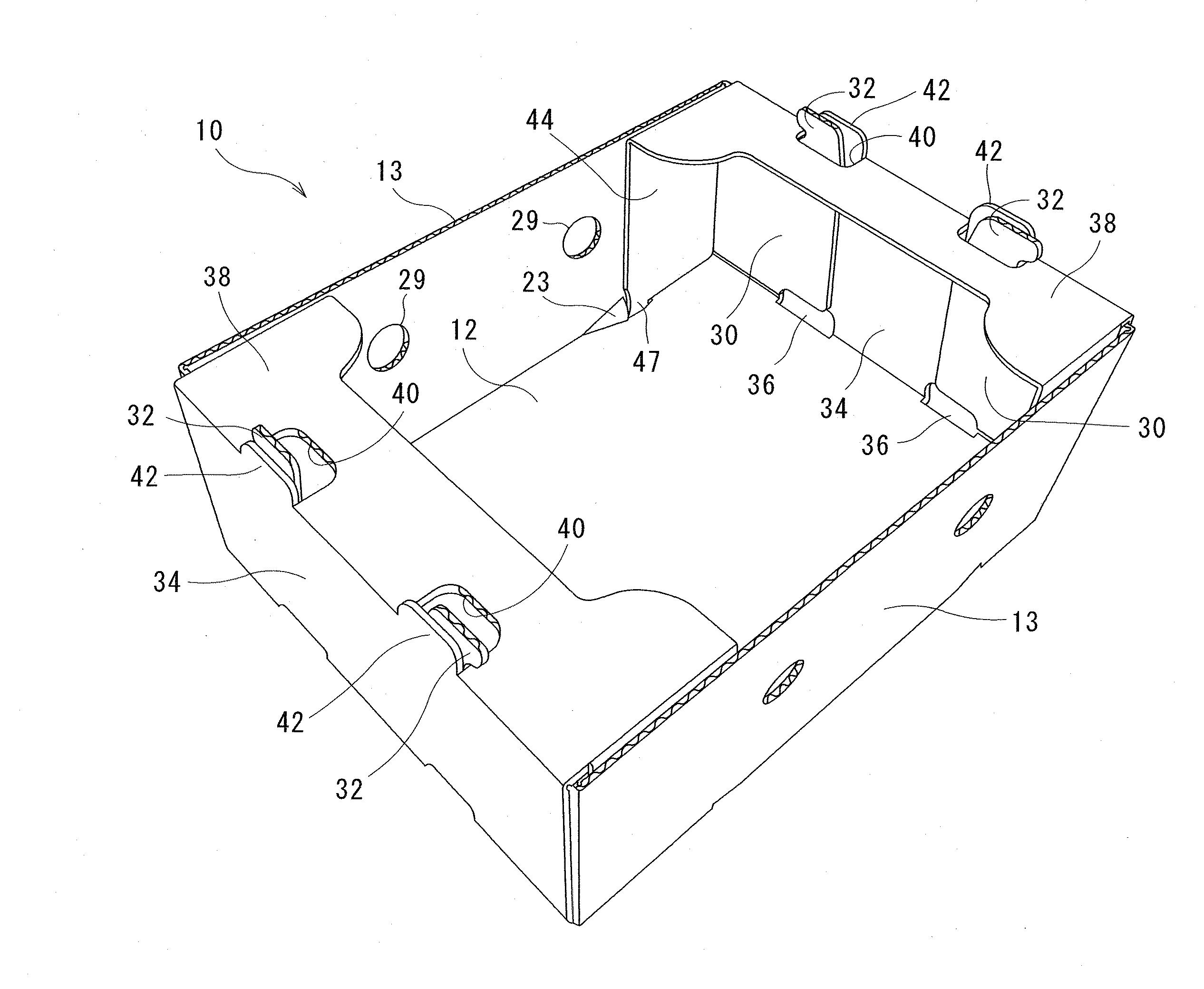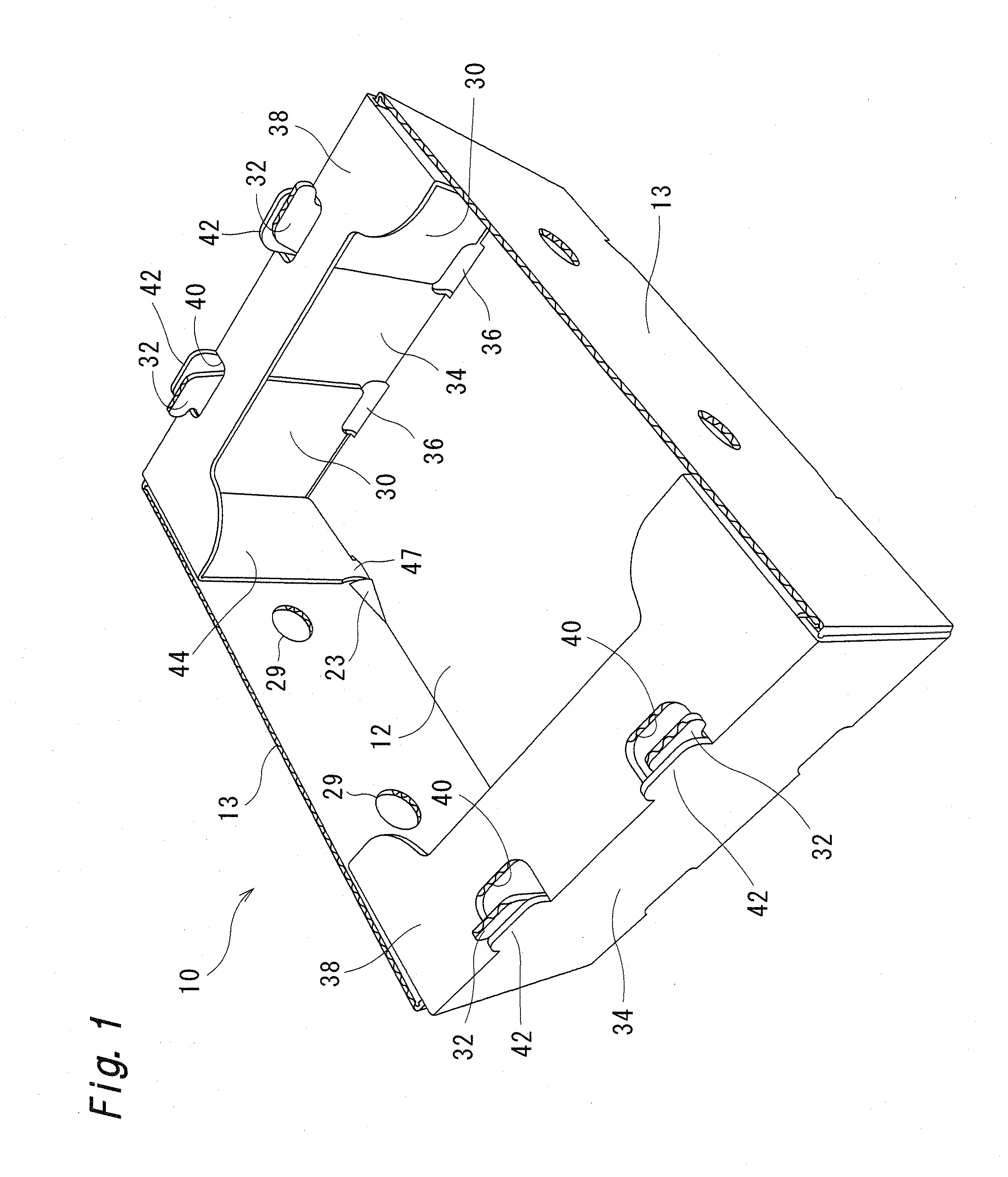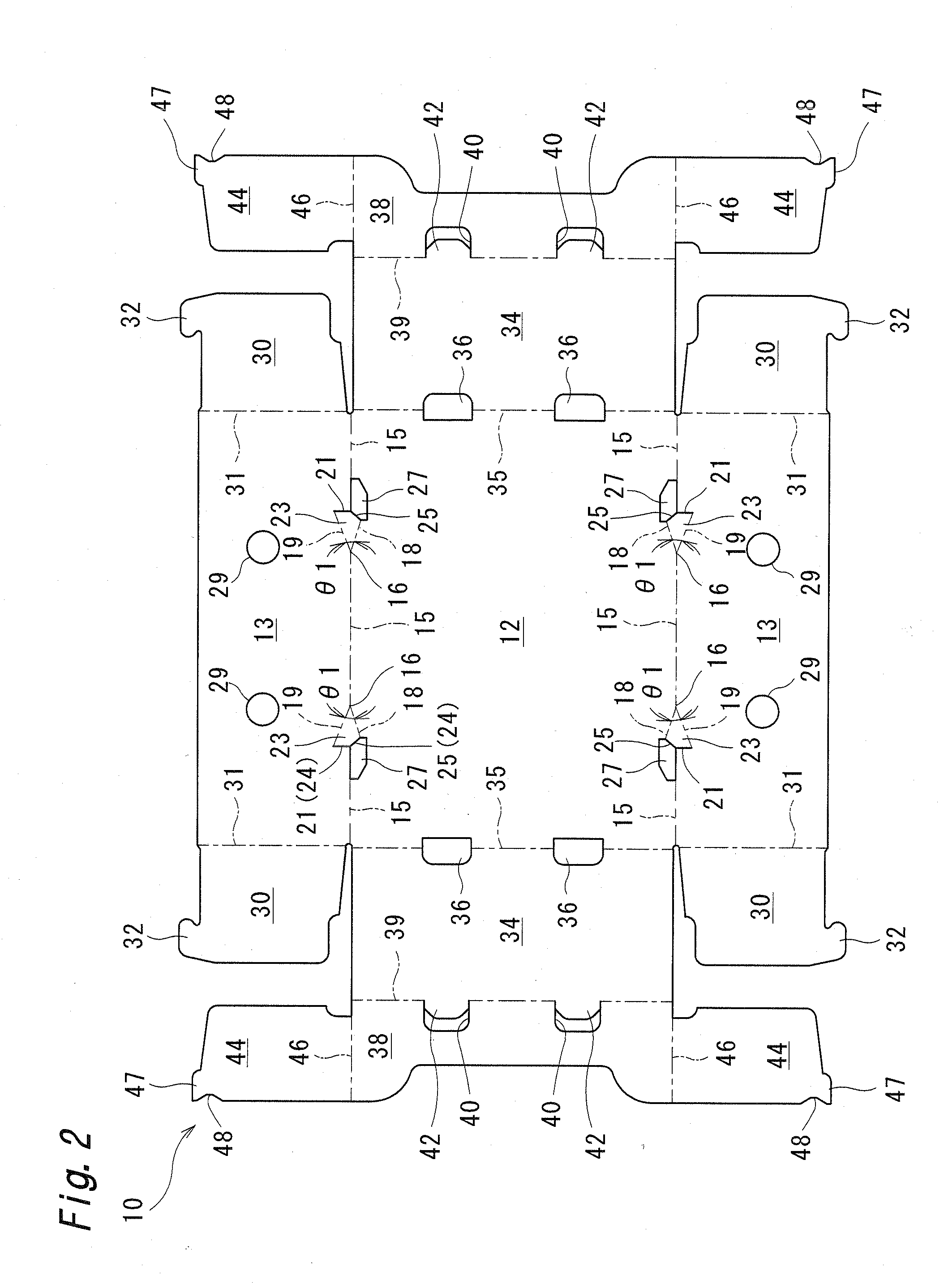Locking structure, container utilizing locking structure, and container assembling apparatus
a technology of locking structure and assembling apparatus, which is applied in the direction of paper/cardboard containers, container making machinery, packaging, etc., can solve the problems of difficulty in automatic assembly and increased cost, and achieve the effect of easy locking and easy and sure locking
- Summary
- Abstract
- Description
- Claims
- Application Information
AI Technical Summary
Benefits of technology
Problems solved by technology
Method used
Image
Examples
first embodiment
[0039]FIG. 1 shows a tray 10 of a first embodiment formed using a corrugated paper board and having a locking structure of the present invention. The tray 10 forming a container is a box which includes: a bottom panel (first panel) 12; side panels (second panels) 13; and end panels 34. An upper end of the tray 10 is opened, and portions of an upper end opening are partially covered by closure flaps 38. The corrugated paper board has a well-known structure where a corrugated-shaped intermediate core is disposed between a front liner and a back liner.
[0040]As shown in FIG. 2, a pair of side panels 13, 13 is connected to long sides (two sides opposite to each other) of the rectangular bottom panel 12, and a pair of end panels 34, 34 is connected to short sides (two sides opposite to each other) of the rectangular bottom panel 12.
[0041]The side panels 13 have a rectangular plate shape, are formed continuously with the bottom panel 12, and are folded against the bottom panel 12 at a righ...
second embodiment
[0060]FIG. 8 shows a tray 10 of a second embodiment. Elements identical to those the trays 10 of the first embodiment are given the same symbols, and the description of such elements is omitted. The tray 10 of this embodiment differs from the tray 10 of the first embodiment in that locking receiving portion 23 and cutout portions 27 are formed on each boundary portion between a side panel 13 and a folding flap 30. In the second embodiment, the folding flap 30 corresponds to the first panel, the side panel 13 corresponds to the second panel, and a locking piece 44 corresponds to the third panel. A locking recessed portion 48 is formed on an outer end edge 45 of each locking piece 44. In the second embodiment, the cutout portions 27 may not be formed.
[0061]In the second embodiment, the side panels 13 are folded against a bottom panel 12, and the folding flaps 30 are folded against the side panels 13. Due to such operations, each locking receiving portion 23 is raised so as to be incli...
third embodiment
[0062]FIG. 9 shows a tray 50 of a third embodiment. In the tray 50, side panels (second panels) 52 are connected to long sides of a bottom panel (first panel) 51, and end panels 53 are connected to short sides of the bottom panel 51. Locking receiving portions 55, cutout portions 56, and a side-panel fold line (first fold line) 54 are formed on each boundary portion between the bottom panel 51 and the side panel 52. An end-panel fold line (second fold line) 57 is formed on each boundary portion between the bottom panel 51 and the end panel 53. Rectangular locking pieces (third panels) 58 are connected to outer edges of the end panel 53. A locking-piece fold line 59 is formed on each boundary portion between the locking piece 58 and the end panel 53. A locking lug 60 projecting toward the side panel 52 is formed on an inner corner portion of each locking piece 58, and a locking recessed portion 61 is formed between the locking lug 60 and an outer end edge of the locking piece 58.
[006...
PUM
 Login to View More
Login to View More Abstract
Description
Claims
Application Information
 Login to View More
Login to View More - R&D
- Intellectual Property
- Life Sciences
- Materials
- Tech Scout
- Unparalleled Data Quality
- Higher Quality Content
- 60% Fewer Hallucinations
Browse by: Latest US Patents, China's latest patents, Technical Efficacy Thesaurus, Application Domain, Technology Topic, Popular Technical Reports.
© 2025 PatSnap. All rights reserved.Legal|Privacy policy|Modern Slavery Act Transparency Statement|Sitemap|About US| Contact US: help@patsnap.com



